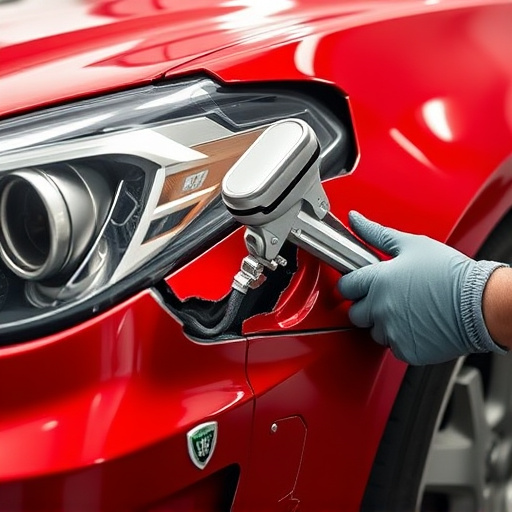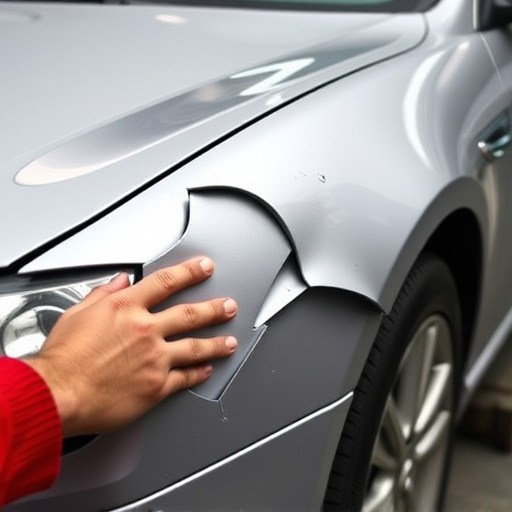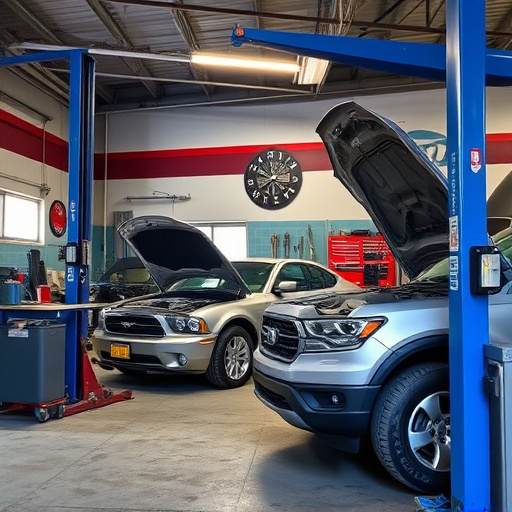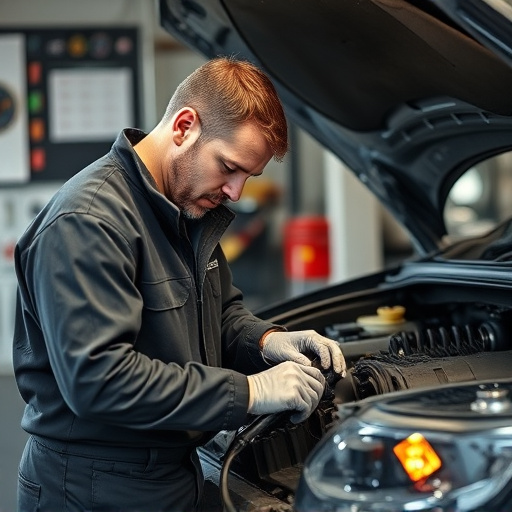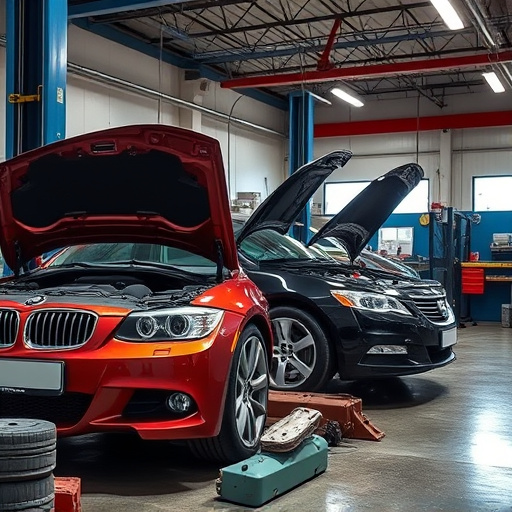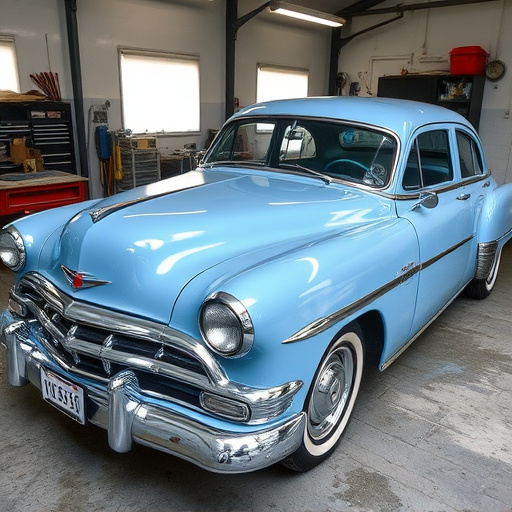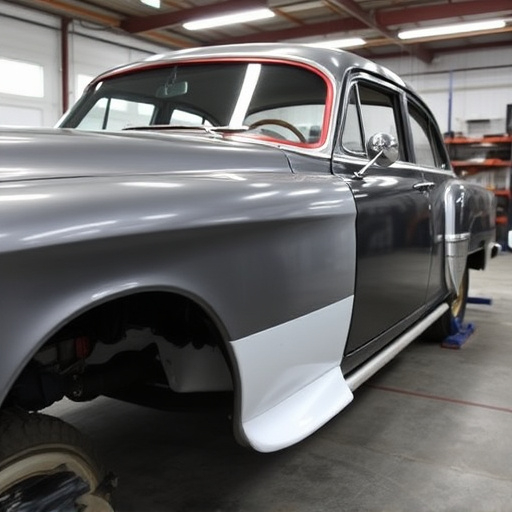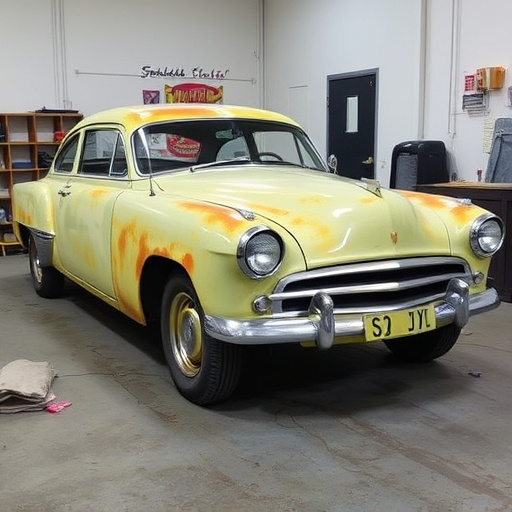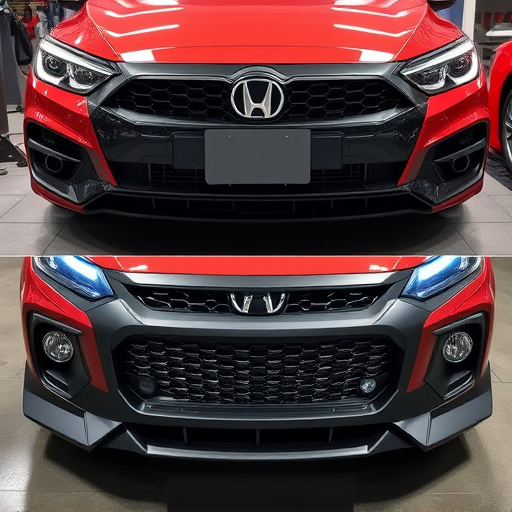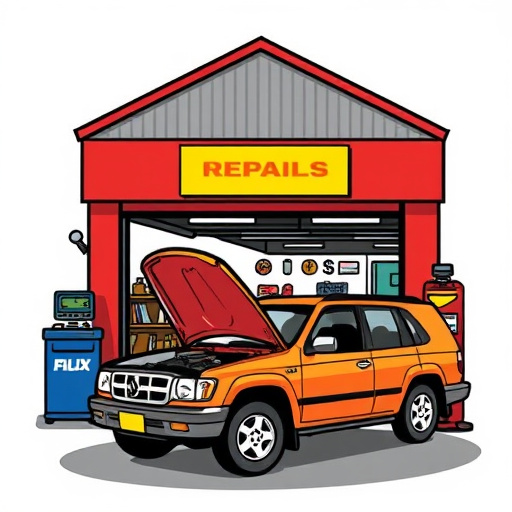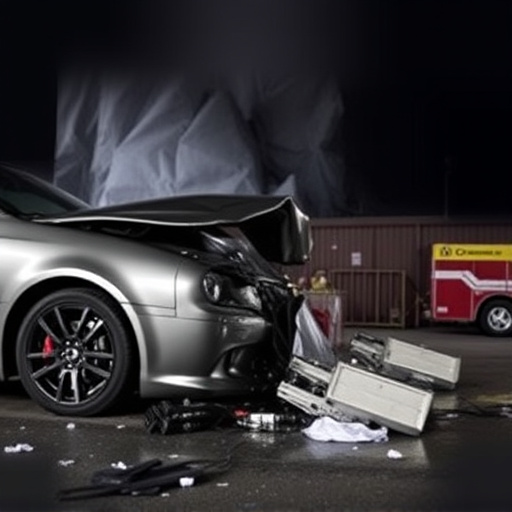Accurate radiator collision repair hinges on thorough damage assessment using tools from basic measurements to advanced digital scanners. Proper techniques ensure precise estimates, correct part selection, time/money savings, and flawless restoration of cooling system functionality. Safety gear like impact-resistant goggles, heat-resistant clothing, and proper ventilation are crucial for technicians. Specialized equipment including precision cutting kits and high-quality welding tools are vital for efficient, effective repairs.
In the realm of automotive restoration, radiator collision repair is a specialized skill that demands precision and an array of essential tools. This article guides collision repair technicians through the process, equipping them with knowledge of damage assessment, safety gear, and specialized tools for efficient, effective repairs. From understanding radiator damage to selecting the right equipment, these strategies ensure quality work, enhancing vehicle performance and safety in today’s digital era.
- Understanding Radiator Damage Assessment Tools
- Essential Safety Gear for Collision Repair Technicians
- Specialized Tools for Efficient Radiator Repairs
Understanding Radiator Damage Assessment Tools

When it comes to radiator collision repair, assessing the damage accurately is the first step towards a successful fix. This involves specialized tools designed to detect and diagnose issues with precision. Professionals in this field rely on a range of equipment, from simple measurement tapes and magnifying glasses to advanced digital scanners. These tools help identify cracks, dents, or corroded areas that may be invisible to the naked eye, ensuring every damaged component is accounted for during the repair process.
Understanding how to utilize these assessment tools is crucial for effective radiator collision repair. It allows technicians to provide accurate estimates and select the appropriate replacement parts, whether it’s car paint repair or more intricate vehicle repair services. The right assessment can also prevent further damage, saving time and money in the long run, and ensuring a flawless restoration of the vehicle’s cooling system functionality.
Essential Safety Gear for Collision Repair Technicians

Collision repair technicians working on radiator collision repair jobs face unique challenges that demand specialized safety gear. Beyond the standard personal protective equipment (PPE), such as gloves, eye protection, and respirators, professionals in this field require tools designed to mitigate risks associated with handling damaged car bodies. This includes heavy metal fragments, toxic chemicals, and noxious fumes. High-quality, impact-resistant goggles and ear protection are essential to guard against flying debris and loud noises generated during the repair process.
Additionally, technicians should wear heat-resistant clothing and gloves when dealing with hot components, as radiators can retain significant heat even after disassembly. Proper ventilation in the work area is crucial for preventing the accumulation of harmful fumes from solvents and paints used in auto maintenance and tire services. By prioritizing these safety measures, collision repair technicians not only protect themselves but also ensure the integrity of their work, promoting a safer and more effective radiator collision repair process.
Specialized Tools for Efficient Radiator Repairs

When it comes to radiator collision repair, having the right tools makes all the difference. Specialized equipment designed for this specific task can streamline the process, ensuring efficient and effective repairs. One essential tool is a precision cutting kit, which allows technicians to carefully remove damaged sections of the radiator without compromising the overall integrity of the component. This is crucial in maintaining optimal cooling performance after the repair.
Additionally, an array of specialized welding tools is vital. These include high-quality welding guns and accessories that enable precise, controlled welds, enhancing the structural strength of the repaired radiator. In the realm of automotive repair, especially for auto body repair and auto glass replacement jobs involving radiators, these tailored tools contribute significantly to the quality and longevity of the restoration process.
When it comes to radiator collision repair, having the right tools is paramount. From damage assessment to safety gear and specialized repairs, each step requires specific equipment designed to enhance efficiency and accuracy. By investing in these essential tools, collision repair technicians can ensure high-quality outcomes for radiator repairs, prioritizing safety and customer satisfaction.

